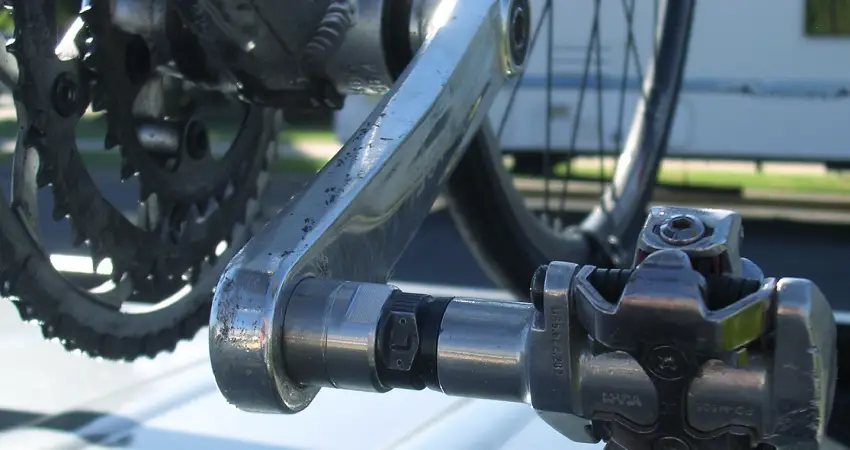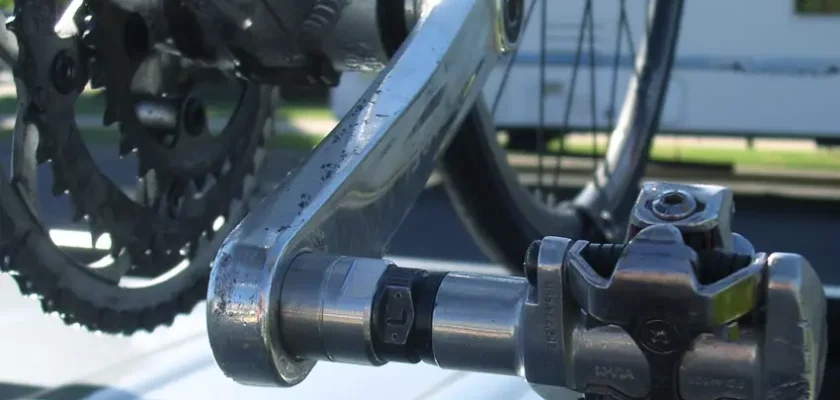This is a question that many cyclists have been pondering. Whether you’re a seasoned rider or a newbie to the world of cycling, it’s essential to ensure that your bike setup is safe and comfortable.
Bike pedal extenders have gained popularity among cyclists for their ability to enhance the riding experience by providing additional foot support. However, concerns have been raised about their safety, leaving riders unsure about whether to use them or not.
In this article, we will delve into the topic of bike pedal extenders and shed light on their safety. We will explore the potential benefits and drawbacks of using these extenders and provide you with all the information you need to make an informed decision. So, if you’ve ever wondered, “Are bike pedal extenders safe?” – Keep reading to find out the answer!
Are Bike Pedal Extenders Safe?

The Importance of Pedal Positioning
When it comes to cycling, having the right bike fit is crucial. Proper bike fit ensures optimal power transfer, efficiency, and overall comfort during rides. One aspect of bike fit that is often overlooked is pedal positioning.
For riders who have wider feet, or longer legs, or experience discomfort while cycling, using pedal extenders may seem like an appealing solution. However, before considering pedal extenders, it is important to understand their purpose, potential benefits, and most importantly, their safety.
What are Pedal Extenders?
Pedal extenders are metal fittings that attach to the pedals of a bicycle. They increase the distance between the cyclist’s feet and the bike frame, allowing for a wider stance.
By extending the position of the pedals, these devices can provide more clearance for riders with broader feet or those who require a wider stance for comfort and optimal alignment.
The Benefits of Pedal Extenders
Using bike pedal extenders can offer several benefits to cyclists, including:
Enhanced comfort: Pedal extenders can alleviate discomfort in the feet, knees, and hips by providing a wider stance and allowing for a more natural alignment of the body.
Corrected biomechanics: For riders with wider feet, pedal extenders can help achieve proper alignment with the pedals, reducing the risk of knee or leg injuries caused by an unnatural foot angle.
Improved power transfer: By allowing the foot to sit in a more natural position, pedal extenders can optimize power transfer, resulting in increased efficiency and reduced fatigue during rides.
Addressing Safety Concerns
While pedal extenders can offer benefits, it is essential to consider their safety implications. Here are some important points to keep in mind:
Compatibility and Installation
Before considering pedal extenders, it is crucial to ensure compatibility with your bike. Different pedals and cranksets have varying thread sizes and designs, so it is essential to choose a pedal extender that matches your specific setup.
Additionally, proper installation is necessary to guarantee stability and safety. It is recommended to consult a professional bike shop to ensure the correct fit and installation of pedal extenders.
Increased Q-Factor
The Q-factor refers to the distance between the pedals on a bike. Pedal extenders increase the Q-factor by widening the distance between the feet. While this can help with alignment and comfort for some riders, it can potentially cause other issues, including:
Increased stress on the hips: A wider stance may lead to increased stress on the hips, potentially causing discomfort or pain during longer rides.
Altered pedaling efficiency: The wider the Q-factor, the more the knee has to move outward during pedaling. This can affect pedaling efficiency by placing additional stress on the knees.
Handling differences: A wider Q-factor can also impact bike handling, especially in technical or tight turns. Cyclists may need to adjust their riding technique accordingly.
It is important to carefully assess the potential risks and benefits based on your specific needs and riding style.
Reduced Clearance
When using pedal extenders, it’s crucial to consider potential clearance issues. Pedal extenders increase the lateral distance between the feet and the frame, which may lead to contact between the feet and the bike frame or crank arms.
Riders should ensure that their feet do not rub against any parts of the bicycle during pedaling. If there is limited clearance, it may be necessary to adjust the position of other components, such as the saddle or handlebars, to accommodate the wider stance.
Additional Maintenance
Using pedal extenders may require additional maintenance. The increased leverage and stress placed on the pedals may make them more susceptible to wear or damage. Regularly inspecting and maintaining pedal extenders, as well as the pedals themselves is essential to ensure safe and reliable cycling.
Considerations for Individual Cyclists
Every cyclist is unique, and what works for one person may not work for another. When deciding whether to use pedal extenders, consider the following:
Body type and biomechanics: Riders with wider feet or unique body proportions may benefit more from pedal extenders.
Riding style and needs: Cyclists who engage in specific disciplines such as road cycling, mountain biking, or commuting may have different requirements when it comes to pedal positioning.
Comfort and injury history: If you experience discomfort or have a history of knee or leg injuries, pedal extenders could potentially provide relief and support.
Consult a Professional
To ensure the safety and effectiveness of using pedal extenders, it is highly recommended to consult with a professional bike fitter or bike shop. They can assess your individual needs, provide expert advice, and help you choose the right pedal extenders for your bike. A professional fitting session can also address any other potential fit issues and ensure optimal bike setup and comfort.
Frequently Asked Questions
1. Are bike pedal extenders safe for all types of bikes?
Bike pedal extenders are generally safe for most types of bikes, as long as they are properly installed and the cyclist follows the manufacturer’s guidelines.
2. Can bike pedal extenders cause instability or affect bike handling?
When installed correctly, bike pedal extenders should not cause any instability or affect the bike’s handling. However, it is important to start with a gradual increase in pedal width and re-adjust riding technique if needed.
3. Are there any risks of injuries associated with using bike pedal extenders?
When used correctly, the risk of injuries associated with bike pedal extenders is minimal. However, riders should be aware of potential complications such as increased strain on the knees or reduced ground clearance in tight turns.
4. Will using pedal extenders affect the cyclist’s pedaling efficiency?
Using pedal extenders may alter the cyclist’s pedaling biomechanics slightly, but it can also help improve comfort and reduce knee pain. It is essential to find the right balance and positioning to maintain pedaling efficiency.
5. Can bike pedal extenders cause damage to the pedals or crank arms?
With proper installation and regular maintenance, bike pedal extenders should not cause any damage to the pedals or crank arms. However, it is crucial to periodically check and tighten all components to prevent any potential issues.
Final Thoughts
In conclusion, the safety of bike pedal extenders is a topic of concern for many cyclists. While these devices can provide added comfort and convenience, it is crucial to exercise caution when using them.
It is recommended to ensure that the extenders are properly installed and regularly maintained to prevent any potential accidents or injuries.
Additionally, seeking professional advice and guidance can further contribute to a safer riding experience. Therefore, if used correctly and with proper care, bike pedal extenders can be a safe and beneficial addition to a cyclist’s gear.

